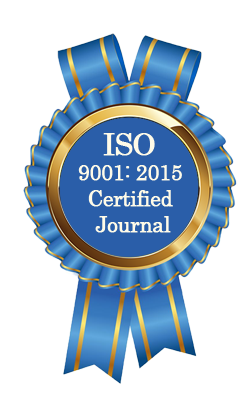| All | Since 2020 | |
| Citation | 105 | 60 |
| h-index | 4 | 4 |
| i10-index | 3 | 2 |
WJAHR Citation 
Login
News & Updation
Best Article Awards
World Journal of Advance Healthcare Research (WJAHR) is giving Best Article Award in every Issue for Best Article and Issue Certificate of Appreciation to the Authors to promote research activity of scholar.
Best Article of current issue
Download Article : Click here
Indexing
Abstract
PREVALENCE OF OBESITY AMONG WORKERS IN FAMILY MEDICINE CENTERS IN NINEVEH PROVINCE
Anwar Jameel Shamoon*, Reem Fakhri Thanoon and Halla A. S. Yousif Ikzir
ABSTRACT
Background: Obesity and overweight have become serious global health concerns in recent years. Adults with abody mass index (BMI) of 30 kg/m2 or higher are classified as obese, and they are more likely to developdiabetes, osteoarthritis, and cardiovascular disease. This has led to increased recognition for the profession ofbariatric medicine, which focuses on the causes, prevention, and treatment of obesity. Objectives: Is to establishthe prevalence of obesity among all family centers workers and to explore their attitude toward issues related toobesity. Methods: This is a retrospective, descriptive cross-sectional study, it was conducted from January 2023to the end of December 2023. Data collection and follow up of patients were clinically carried out at all familycenters in Nineveh province including eleven family centers. All medical workers aged 18 years and more whowere employed at the health centers under study were included. The questionnaire includes two parts; part one forsocio-demographic information and part two for specific anthropometric measurements. Results: The studysample composed of 640 members. The present study found out that 412 (64.37%), 129 (20.16%) and 99(15.47%) members of the study sample were normal (BMI 18.5-24.9), overweight (BMI 25-29.9) and obese (BMI≥30), respectively. Class 1 obesity counted 70 and formed 70.70% of total obese, and 10.94% of the totalpopulation of the study sample. Class 2 obesity counted 19 and formed 19.19% of total obese, and 2.95% of thetotal population of the study sample. While, those obese of class 3 obesity formed 10.10% of total obese, and1.56% of the total population of the study sample. It is evident that females had more prevalence of overweightand obesity than males. Moreover; the majority of the study participants are married, having post-secondaryschool education, having family history of obesity, and not smoker. The majority of obese patients agree with theidea that obesity is a disease, and thought that their food is unhealthy for obese patients, and eat fast food morethan 5 times per week for obese patients. Additionally; obesity is inversely proportional to time expend forexercise. Conclusion: The increasing rates of obesity with age may represent the accumulation of unresolved riskfactors with age. It is clear from the lower rates of family history of obesity among normal participants incomparison to higher rates of that history among the overweight and the obese that genetic factors may have a rolein the causation of obesity. Unexpectedly, overweight and obese people in study sample, in spite of theirawareness toward their food but they may not have the desire to modify their diet or to change their lifestyle.
[Full Text Article] [Download Certificate]
